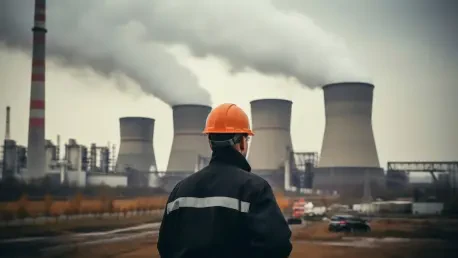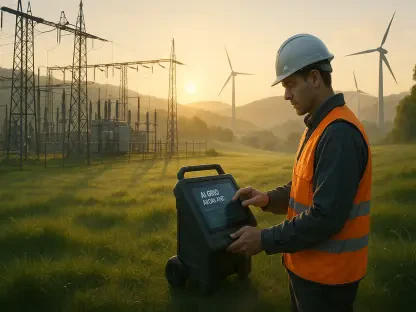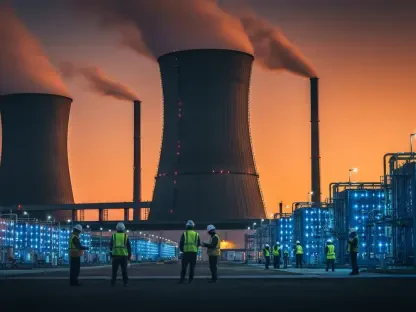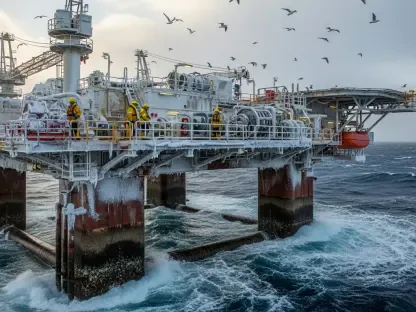In the fast-evolving realm of global energy, Kazakhstan stands at a pivotal juncture as it embarks on its first nuclear power journey under the leadership of seasoned industry giants Rosatom and CNNC. Joining us is Christopher Hailstone, a recognized authority in energy management and renewable energy. With his vast experience, he sheds light on Kazakhstan’s ambitious venture to enhance its energy landscape through nuclear technology.
Can you share more details about the decision to involve Rosatom and CNNC as the leads for the nuclear power plant projects in Kazakhstan?
Kazakhstan’s choice to engage Rosatom and CNNC stems from their strong track records in comprehensive nuclear technology and power plant construction. Both corporations were selected due to their proven capabilities and experience in nuclear operations, which align with Kazakhstan’s need to establish a reliable and modern nuclear framework. This decision signals confidence that these firms can deliver efficient and safe energy solutions tailored for the region’s needs.
Why was Rosatom’s proposal deemed “the most optimal and advantageous,” according to the Kazakh atomic energy agency?
The Kazakh atomic energy agency favored Rosatom’s proposal for its state-of-the-art technology and efficiency. The proposal likely offered a combination of cutting-edge safety features, energy output effectiveness, and economic feasibility, making it highly attractive to Kazakhstan. These factors are essential for establishing a new nuclear plant in a country eager to transition from coal dependency towards more sustainable solutions.
How did Kazakhstan’s referendum in October shape the country’s nuclear energy policy?
The referendum underscored a national commitment to diversify energy resources, pivoting away from coal towards sustainable energy, including nuclear. This public mandate strengthened policy direction, encouraging governmental and private sector support and investment in nuclear energy development. The vote was a crucial step in aligning national energy policies with global sustainability trends.
What are the expected benefits for Kazakhstan in building nuclear power plants?
Nuclear energy presents Kazakhstan with numerous benefits, primarily by reducing its heavy reliance on coal and helping meet energy needs with lower carbon emissions. Additionally, it offers energy security and stable electricity pricing. Building nuclear plants supports economic growth through job creation and technological advancement, providing a brighter alternative to current energy paradigms.
Can you elaborate on the role of state export financing from Russia in this project?
State export financing from Russia will likely play a pivotal role in facilitating the project’s financial feasibility, enabling Kazakhstan to access funds necessary for development and construction costs. This financial backing is crucial to ensuring the project’s timely and efficient execution, potentially boosting confidence from other investors and stakeholders involved.
What are VVER-1200 Generation 3+ reactors, and why are they considered advanced technology?
VVER-1200 Generation 3+ reactors represent the forefront of nuclear technology, renowned for their enhanced safety features, operational efficiency, and environmental friendliness. These reactors employ passive safety systems and long lifecycle capabilities, making them a robust choice for any new nuclear installation seeking to maximize performance and minimize risks.
Could you provide more details about the planned construction site in the village of Ulken?
Ulken was strategically selected for its geographical and infrastructural suitability, ensuring ideal conditions for nuclear plant operations. Factors like proximity to existing power grids, water resources, and geological stability likely influenced this choice, aiming to optimize the logistical and operational efficiency of the nuclear plant.
What can you tell us about Kazakhstan’s separate agreement with China’s CNNC for the second nuclear plant?
Kazakhstan’s agreement with CNNC signifies a mutually beneficial collaboration, leveraging China’s comprehensive nuclear technology expertise and industrial strengths. This partnership underscores Kazakhstan’s strategy of diversifying its international energy alliances, pairing local needs with global nuclear competence.
Why didn’t CNNC respond to requests for comment? Is this typical for CNNC, or was this an anomaly?
It might be due to their internal communication protocols or strategic discretion during early project phases. While not typical, these situations can arise due to various operational or diplomatic considerations, awaiting formal announcements at appropriate stages.
Could you share which other companies are expected to participate in these consortiums, and when those partnerships might be confirmed?
While specific companies have yet to be announced, ongoing evaluations will likely finalize partnership decisions. The confirmation of participants is anticipated soon as project timelines advance and detailed plans are finalized, ensuring all parties involved are strategically aligned.
With proposals submitted by French and South Korean companies as well, what factors influenced the selection of Rosatom and CNNC over these alternatives?
Rosatom and CNNC might have presented proposals that best aligned with Kazakhstan’s specific criteria, including budget considerations, technological advancements, and project timelines. Their existing reputation and past international project successes could also have significantly swayed decision-makers towards these companies.
How does this project align with Kazakhstan’s efforts to boost energy ties with Russia and China?
This project strengthens Kazakhstan’s economic and political bonds with Russia and China, leveraging their nuclear expertise to enhance regional energy security and efficiency. Beyond nuclear energy, Kazakhstan is also pursuing collaborative opportunities in renewable energy and fossil fuels, nurturing a diversified energy relationship.
What are the next steps for this project in terms of planning and execution, and what is the anticipated timeline for these nuclear plants?
Following approvals and consortium agreements, detailed engineering, procurement, and construction phases will commence. The anticipated timeline suggests gradual implementation, with both plants expected to contribute to the electricity grid by 2035, supporting Kazakhstan’s sustainable energy objectives.
Could you describe the economic and environmental implications of adding 2.4 gigawatts of nuclear capacity by 2035 for Kazakhstan?
Economically, this capacity addition will bolster energy independence, underpinning industrial expansion and technology transfer, while environmentally, it signifies a substantial reduction in carbon emissions. This alignment with global sustainability goals can pave the way for Kazakhstan’s larger role in international energy discussions.
How is Kazakhstan planning to balance its energy exports, particularly with its reliance on Russia for oil exports, and the opportunities presented by nuclear energy?
Kazakhstan aims to leverage nuclear energy to diversify its energy export portfolio, potentially reducing dependency on oil exports through Russia, while simultaneously enhancing domestic energy security. The integrated energy strategy is poised to increase resilience, guarding against international market fluctuations and geopolitical shifts.
Do you have any advice for our readers?
Harnessing diverse energy sources is crucial in today’s global landscape. I urge readers to stay informed and open to these transitions, understanding how the interplay of technology and international partnerships can transform energy systems towards sustainability and security.









